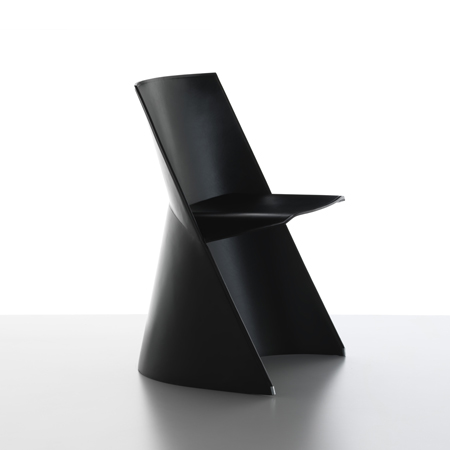
Teepee and Kanu by Konstantin Grcic
Live from Milan: Konstantin Grcic has designed two new chairs for Italian manufacturers Cassina.
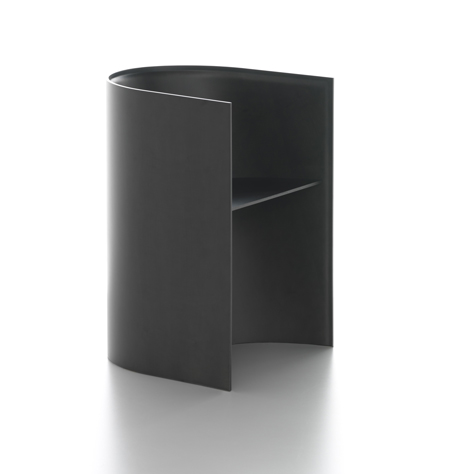
Teepee (top image) is covered in leather and Kanu (above) is made from wood.
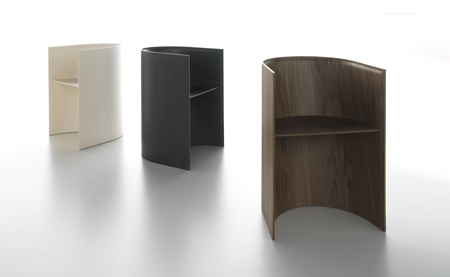
Here's some more information from Cassina:
--
Cassina. The Strategic Vision of Quality
Cassina’s eighty years of creating quality are about more than just its skill in crafting perfect furniture and the most impeccable icons of design using state-of-the-art production technology.
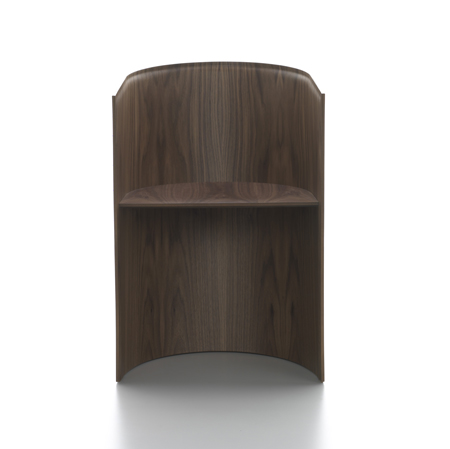
Cassina’s quality is also about drawing on the efforts, experience and passion of individuals eager to take up the challenge of forms and materials. Its means adopting a modern approach to craftsmanship, which is valued as the cornerstone, as an enhancement or sometimes as a necessary complement to state-of-the-art industrial technology.
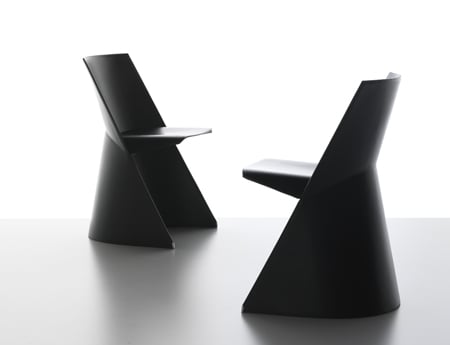
Cassina’s quality means dedicated research in materials across the board, from the most traditional to the newest, investigating ways of using them and exploring their expressive potential for original, high-quality design.
This approach has been a constant throughout Cassina’s history. The company’s legacy is one of know-how, an invaluable tool that helps it achieve its ambitious goals of making home settings that keep abreast of changing contexts and lifestyles. It has even managed to perceive the subtlest of shifts in these lifestyles ahead of the curve.
The design historian Giampiero Bosoni calls them “visions” built with the support of select designers, the result of strategic choices that become original, innovative items, capable of defining new styles of home living.
This is the spirit with which Cassina has chosen the designers to create its new pieces, which are debuting at the 2008 Milan Furniture Fair.
Cassina has renewed its ties with some designers who have joined forces with it in the past, giving them the task of taking their now familiar design skills one step further, to investigate some of the hallmark qualities that have formed Cassina’s identity over the years.
Rodolfo Dordoni’s Eloro sofa is a modern take on the simple, yet never bland, style that is seen in one of Cassina’s most traditional product ranges, though one that has possibly been neglected in recent years: the wooden furniture launched by Gio Ponti is now accompanied by the Pilotta family of armchairs, chairs and footstools, which were introduced last year.
The peerless Mario Bellini was asked to take his in-depth investigation of the expressive potential of leather even further. His earlier work resulted in a perfect balance of proportions and construction, as we can see in his timeless classic, the Cab chair. Flanked by Cassina’s manufacturing expertise, and with an uncommon mastery of materials, Bellini has gone beyond the Cab chair and has come up with the Bull, a leather chair that is even more contemporary and undulating, now with such unique details as fabrics inspired by leatherworking, and expressing the architect’s thinking on material.
Philippe Starck was brought in with the specific goal of adding to Cassina’s core-business collection of upholstered furniture. He both expanded the Privé collection with pieces acclaimed by the public and the media alike, with a new, shallower seat, and introduced the new Volage line. At the other end of the spectrum, Cassina turned to the skilled hands of new designers to develop a product category that has so far been underrepresented in Cassina’s catalogue: the chair.
Designers were chosen for their ability to capture the spirit of Cassina, which has always focused on in-depth research into materials, almost as though challenging their inherent qualities. This is clear to see in the work of Konstantin Grcic, which has culminated in his leather Teepee, and his wooden armchair, Kanu. We can see the same spirit applied to the perfection of forms, combining all Cassina’s skills and transforming them into works like the lightweight Heaven armchair by Tokujin Yoshioka. These new skills and new ways of thinking have closely interacted with the company’s philosophy and deftly merged with its workshop’s methods. Cassina’s workshop is a hive of activity and the source of all these items, which reveal its vision to all those who have eyes to pick out the individual details or to acquire a perception of the whole.
Cassina’s products are a perfect blend of design and technology, bringing together in each single piece both traditional craftsmanship and engineering techniques: each contributes to the other, creating unique designs that come about by working in close contact with each designer. The results are clear to see at the made in Cassina exhibition at the Triennale di Milano, 16th April – 7th September 2008, an exploration of the world of Cassina through 100 models made by some twenty international designers during Cassina’s eighty-year history. The exhibition provides an overview of the decisive contribution of these partnerships, and gives a new perspective on its roots while paving the way for its new vision.
The new designs for 2008 rediscover and bring new life to the spirit of Cassina, giving it a modern touch. They convey and bring out its values in authentic icons of design, pieces that are unique in their expression of beauty and yet able to interact with each other. They are diverse, and yet show how complementary forms and ideas can coexist harmoniously in a single setting, whether by contrast or affinity.
Each piece lends itself to multiple interpretations, as we can see in the stand designed by Piero Lissoni on the theme of the “Fragmentation of the City”. This stand is designed as a kaleidoscope with the walls clad with regular mirror panels and photographic details of hypothetical metropolises. It recreates the living area of a city apartment or loft overlooking the city.
The space suggests a city apartment or loft, envisioned only in its living space, overlooking the world of the city below. The living room itself is presented in different versions, using typical elements of English-style gardens such as natural partitions made of bushes and hedges, with fragrant plants like lavender, narcissus and jonquil. These partitions create four different areas furnished with the new products.
Representing the world of labour, “Men at Work” is an installation inspired by the projects currently underway behind the scenes. This is the theme of the showroom in Via Durini, which Lissoni has envisioned as a factory warehouse:
“…the shop is whimsically and symbolically seen as the reign of architects in their role as simple workers rather than media superstars, peeling away the flawless façade of creators of design” Inside a space divided by white sheet metal walls that create effects of light and transparency, piles of pallets and pallet trucks are strewn about to give the idea that everything is ready to transport merchandise, including the products by Mario Bellini, Rodolfo Dordoni, Konstantin Grcic, Piero Lissoni, Philippe Starck and Tokujin Yoshioka.
Summing up the vision that Cassina is bringing to the Milan Furniture Fair 2008, Giuliano Mosconi concludes the preface for the made in Cassina catalogue:
“… History shows us that Cassina’s industrial plans have always been informed primarily by its ability to change, evolve and stay in tune with the times. In tribute to Cassina’s roots and cultural and industrial growth, we would like to find the strength to end one phase of history and begin a new one, starting from an awareness of our roots in order to usher in a new age that will equally be one of true excellence.”